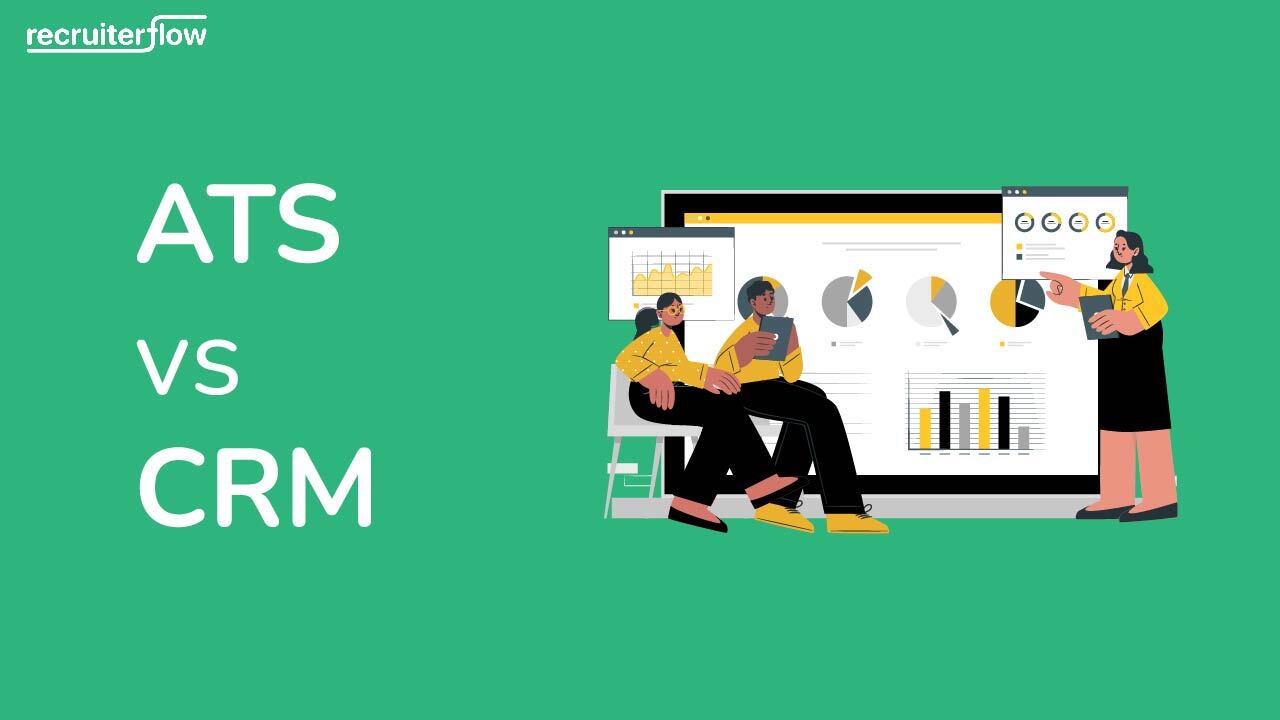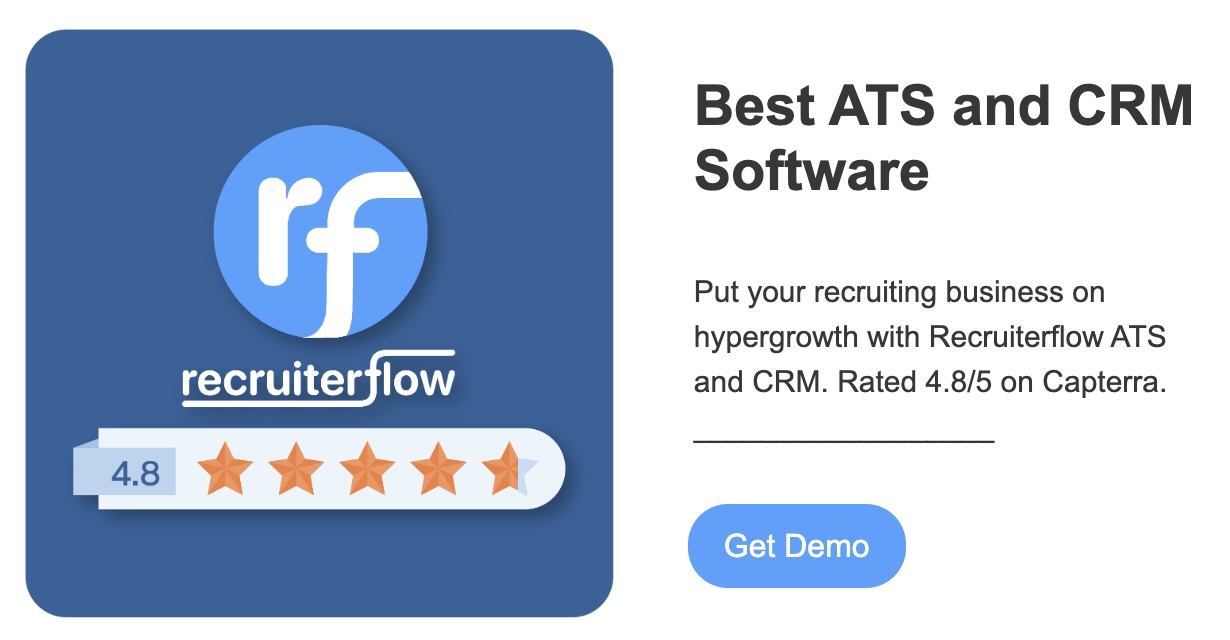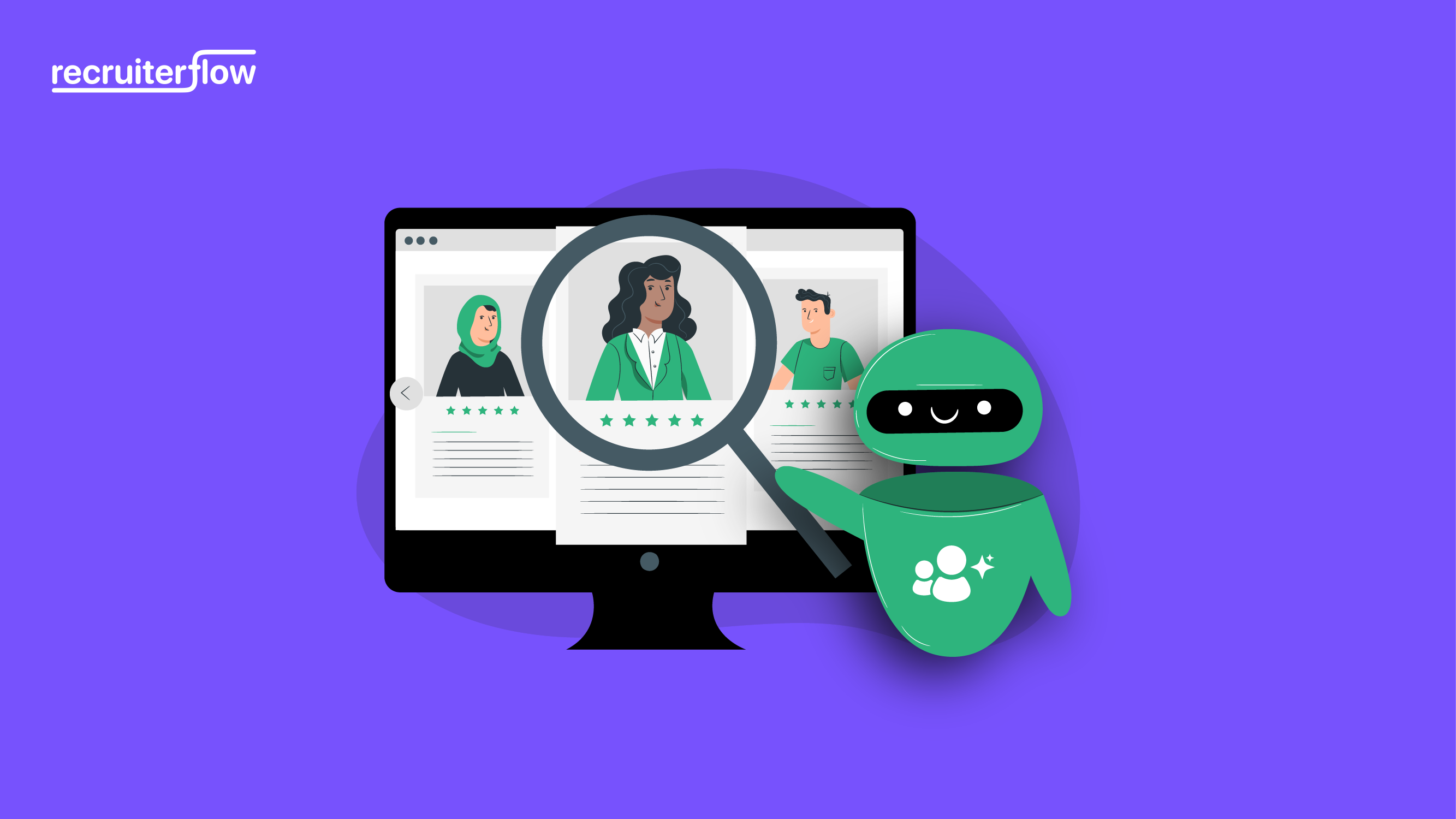
ATS vs CRM: Why Do You Need Both?
In this competitive recruiting world, recruiters need to stand out from the crowd and implement fast-moving and engaging recruiting practices. A top-notch recruiting software, with both an Applicant Tracking System (ATS) and a Candidate Relationship Management (CRM) system, can give recruiters the edge they need to succeed.
The recruitment market is valued at over $215 billion worldwide and is expected to grow by 5.6 percent in the coming years, projected to be worth over $330 billion by 2025. With various talent acquisition suites and recruitment technology solutions, it can be challenging to navigate the alphabet soup of ATS and CRM to determine the best fit for your needs.
While ATS and a recruitment CRM are both popular choices for recruiters, many believe that they don’t need a CRM if they already have an ATS. However, wise recruiters know that a top-quality solution that offers both an ATS and a CRM in one platform is crucial to success, as each focuses on a specific function within the hiring process.
So, what is ATS vs CRM (the differences) and why should you use both to source, attract, and hire the best talent?
Let’s start with the basics.
What is an ATS?
An ATS aka applicant tracking system is a tool that helps recruiters manage the process of recruiting candidates.
ATS systems are basically online databases or repositories that allow you to store information about applicants, including resumes and cover letters, as well as interview notes and offer letters.
The best applicant tracking system allows you to track which applicants have applied for which positions, how many rounds of interviews they’ve had, whether there are any pending offers on the table for them, and so on.
What is recruiting CRM?
Recruiting CRM stands for a candidate relationship management system. It is used to manage the interactions between recruiters and potential candidates. This includes things like tracking when a candidate submits an application, scheduling interviews, and sending automated email follow-ups.
It can be used to manage your company’s recruitment strategy, automate processes, track candidates, and reduce time spent on administrative work.
The best recruitment CRM keeps prospects engaged with the process and encourages them to continue pursuing a position at your company even if they do not hear back from you right away.
ATS vs CRM: What is the difference
| Aspect | ATS | Recruitment CRM |
|---|---|---|
| Primary Purpose | Manages and automates the hiring process. | Focuses on building and maintaining candidate relationships. |
| Candidate Pool | Emphasizes active candidates in the hiring process. | Houses both active and passive candidates as a talent pool. |
| Candidate Categorization | Typically based on current job/work information. | Categorizes candidates based on their desired job roles. |
| Candidate Engagement | Limited ability to measure candidate engagement. | Provides tools to assess and nurture candidate relationships. |
| ROI Metrics | It may have limited integration capabilities. | Tracks comprehensive ROI metrics for data-driven decisions. |
| Functionality Focus | Streamlines administrative tasks in the hiring process. | Centers on candidate engagement and relationship management. |
| Cost-Effectiveness | Aims to reduce hiring costs and optimize resources. | Invests in building candidate relationships for long-term gains. |
| Client Management | Does not have client management capabilities | Recruitment CRM helps in managing the business side effectively |
| Integration with Other Tools | May have limited integration capabilities. | Often integrates with various sourcing and communication tools. |
ATS vs CRM: Why you need a recruitment CRM
Using an applicant tracking system (ATS) alone to entice mostly passive candidates can be like using a knife in a gun battle. Although essential to the hiring process, ATS is not intended for fostering engagement and managing relationships. CRM system for recruitment, on the other hand, empowers you to interact with your candidates (or customers) and document every interaction. This system provides better command over the process and lessens the effort and time required to build engagement at scale. Here are some reasons why CRM implementation is essential for your recruitment business.
1. Stores both candidate and client data
Recruitment CRM’s primary purpose is not just to store data but to help you track your relationships in the most seamless way possible. A CRM for a recruiting agency doesn’t just help you manage candidates but also manage your clients and run your business development process.

2. Auto logging of all the emails and calendar invites
One of the biggest benefits of a recruitment CRM is that it can automatically log all emails and calendar invites. While this is a feature of some ATS systems, most ATS systems require you to log in separately to your email and calendar, which is a pain.
Recruitment CRM software lets you easily auto-log all emails and calendar invites, saving time by eliminating the need for manual note-taking. This in turn means fewer mistakes — and less admin work for your recruiting and back office teams who have to go back through old emails and calendar invites looking for information about a candidate.
3. People-focused aspects of talent acquisition
ATS is process-centric. Recruitment CRM is relationship-centric.
An ATS works best when it follows a clearly defined process. This means it is designed to provide the best possible experience for recruiters and hiring managers who use it. The main goal of ATS is to help you create a pipeline of candidates to fill your openings. For example, you want to hire someone who has at least 3 years of experience in marketing or sales.
A recruitment CRM system, on the other hand, is about building relationships with candidates and customers who are already in your pipeline. Recruitment CRM helps you manage all of those relationships so that they don’t fall through the cracks or get lost in an inbox somewhere.
4. Email Sequences to expand your outreach to prospective candidates & clients
You won’t necessarily have time or energy to use cold calling or emailing every single person who has applied for a job at your company.
With email templates in your recruiting CRM, you can easily send personalized messages to candidates and clients alike.
That way, even if their experience with your company has been limited, they’ll still feel like they know you well enough that they want to work with you again in the future — even if it’s not for this position!
In addition to sending out personalized emails, your recruiting CRM can also help generate leads by using drip campaigns or email sequences (or both).
Why do you need an ATS for your recruitment business
1. All things related to active application
An ATS is concerned with everything related to jobs and candidates. This includes posting job openings, accepting applications, searching resumes, reviewing candidates, scheduling interviews, and managing offers.
2. Store job descriptions
Job descriptions are often stored within an ATS because they are used frequently during the recruitment process. Job descriptions can be tailored to specific roles or positions, making them ideal for use within a recruitment system – especially if you have multiple positions open at once.
This is valuable information that helps HR and hiring managers understand what they’re looking for in applicants and how those applicants will be evaluated.
3. Track applications as they progress through the funnel
You can track each step of the hiring process from start to finish.
This also allows you to see where candidates drop out and why. The same data can be used to assess how long it takes people to apply for jobs and what elements of your job descriptions turn them off (or on), for instance.
4. Send update emails, calendar invites, etc.
ATS can send out reminders about upcoming interviews or when someone has applied for a position within your company so no one slips through the cracks! You don’t have to manually create every communication or appointment — they’re all taken care of by the system.
5. Store resume and interview feedback
Applicant tracking systems track which candidates have applied for which jobs on a particular date. This means you can see at a glance which candidates have applied for a particular job. It also means you can easily pull up the resumes of applicants who previously applied for other jobs in your company.
Collecting and storing interview feedback can help you track trends over time and make improvements based on patterns and trends that emerge from your recruiting data.
Why you need modern recruiting software with Integrated CRM and ATS
As a recruiter, you’re constantly being asked to do more with less. You need to be able to manage your recruitment business and your employees in an efficient way so you can focus on growing your agency.
ATS is process-centric and CRM is relationship-centric. By combining both, you can unlock great candidate experience and productivity for your own team.
This is why we need to step away from debating over ATS vs CRM and move towards the integration of ATS and CRM for recruitment.
Here are seven benefits of integrating your ATS and CRM –
1. The best of both worlds – automation and optimization
Automation is key for saving time and effort, as well as ensuring consistent data quality across every step of the recruitment process. It also streamlines processes by eliminating manual work like data entry or document scanning.
Optimization helps you recruit more effectively by targeting candidates based on their ideal fit with your company culture, job requirements, and more.
2. Systematic cycle for recruitment
Recruitment can get overwhelming and thus it pays for you to be process-driven. An integrated ATS and recruiting CRM will help you streamline your recruitment processes by ensuring that everything is organized from start to finish. This makes it easier for you to manage your candidates’ files while they go through the selection process or even after they’ve been rejected/hired by your company.
The benefits of this include –
- Reduced time on paperwork,
- Avoid duplicate data entry,
- Faster responses to candidates’ queries,
- A better understanding of applicant flow,
- Improved evaluation process.
3. A single source of truth
When your ATS and recruiting CRM are integrated, you can access all your data in one place. This offers more information on each candidate regardless of what source they come from.
You won’t have to worry about entering information manually or keeping track of multiple databases. All information is stored in one place and can be accessed from anywhere within the company.
Also, read our blog on sourcing vs recruitment
4. Better analysis of your candidates
You can get more information about the people who applied for jobs, such as their education level, work experience, skills and interests, strengths and weaknesses, etc.
This information will enable you to easily find out which candidates are most likely to be hired. This is invaluable when determining which candidates would be a good fit for your company and which ones aren’t worth pursuing further.
You can then focus on the best-fit candidates first. This will help you save time and money.
5. Deliver a fabulous candidate experience
If you want to boost your applicant conversion rates, you need to deliver a fabulous candidate experience from start to finish. This means that your candidates should feel that they’re being listened to and understood every step of the way.
By integrating your ATS and CRM recruitment software, you’ll be able to provide candidates with personalized information about their applications and the status of their applications right away. This will help them feel heard and valued, which in turn will encourage them to stay interested, apply again, or refer others in their network.
6. Easier for recruiters to collaborate on projects with colleagues
Today’s workforce is more mobile, which makes collaboration even more important than ever. When recruiters can check tasks off of their lists by simply clicking in the right place, they can spend less time trying to find information and more time doing the work they’re paid to do.
With ATS integrated with CRM software for recruitment, it’s easier for recruiters to collaborate on projects because they can share candidate information across departments using one platform. Integration with other relevant tools such as resource management software could also be a great help here.
This saves time and makes it easier for your team members to work together seamlessly on all aspects of the recruiting process from start to finish!
7. Nurture long-term relationships with great candidates
Think about it. You have a job opening, you post it on your ATS, and you get a lot of applicants. You screen them, interview them, and narrow them down to the top three or four candidates.
Then what?
If you don’t have a good recruiting CRM, chances are that once you make an offer to one candidate, everyone else will be forgotten — even if they would be excellent hires for your company. And if you do have a good CRM for recruiting and staffing business, but don’t integrate it with your ATS, then you can forget about ever being able to keep track of all those great candidates again!
This means that when you start re-hiring some time again in the future, you’ll have to start your hunt for the best candidate from scratch again.
With access to candidate information in one place, you’ll be able to reach out at opportune times and nurture relationships that may have otherwise gone cold.



Sagrika Jain